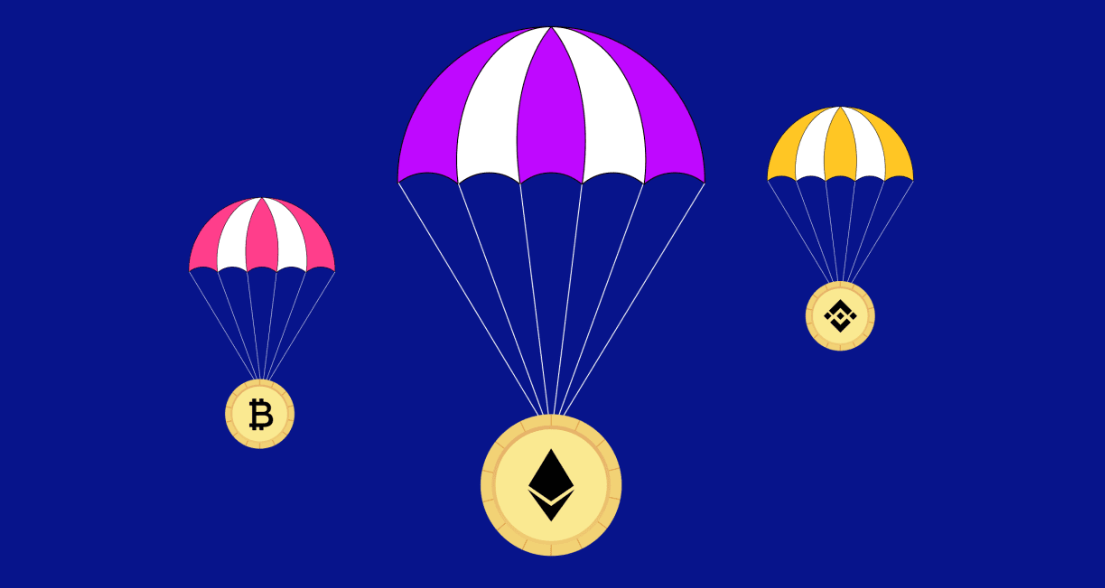Investing in new crypto projects can be exciting, but it comes with significant risks, including scams and high volatility. Thorough due diligence is crucial before committing your funds. Here’s a comprehensive guide on how to evaluate a new crypto project.
Contents
ToggleDiving Deeper into Project Evaluation: A Knowledge-Based Approach

1. Advanced Whitepaper and Roadmap Analysis
The whitepaper is your primary research document. Go beyond a cursory read.
-
Problem-Solution Fit & Market Gap:
- Question: Is the problem genuinely significant? Does it affect a large enough market? Is the proposed solution truly innovative, or is it a slight tweak of an existing one?
- Knowledge Point: Many projects claim to solve a problem, but the “problem” is often contrived, or the solution is inferior to existing, non-blockchain alternatives. Look for a compelling argument for why blockchain is necessary for this specific solution. Sometimes, a traditional database or centralized system is simply more efficient.
- Example: A project aiming to tokenize real estate might highlight issues like illiquidity and high transaction costs in traditional real estate. Their solution should clearly articulate how blockchain addresses these issues better than traditional methods.
-
Technical Architecture and Specifications:
- Question: Does the whitepaper offer sufficient technical detail about the underlying blockchain, consensus mechanism, scalability solutions (e.g., sharding, layer-2s), and security protocols? Is the technical language clear and understandable, or is it filled with excessive jargon to obscure a lack of substance?
- Knowledge Point: A legitimate project will detail how its technology functions. For example, if it’s a new blockchain, how does it achieve decentralization, scalability, and security simultaneously (the “blockchain trilemma”)? If it’s built on an existing blockchain (like Ethereum), how does it leverage that infrastructure while addressing its limitations (e.g., gas fees, speed)? Look for mentions of audits for smart contracts and core protocols.
-
Roadmap Realism and Milestones:
- Question: Are the milestones specific, measurable, achievable, relevant, and time-bound (SMART)? Are past milestones genuinely met, or are they vaguely described achievements?
- Knowledge Point: Many roadmaps are overly ambitious. Look for a balance of technical development, community building, partnerships, and product launches. Check if they have a clear plan for testing, deployment, and user adoption. Vague statements like “building ecosystem” or “strategic partnerships” without specifics are red flags.
2. Deeper Dive into the Team and Advisors
The team is often the strongest indicator of a project’s potential success.
-
Verifying Credentials and Track Record:
- Question: Beyond LinkedIn, are there public interviews, past projects, or academic papers by the team members? Are their claimed achievements verifiable?
- Knowledge Point: Scammers often use fake profiles or inflate their resumes. Cross-reference information across multiple sources. Look for individuals with a proven track record of shipping products, working in relevant industries (e.g., finance, software, specific niche the project targets), and contributing to open-source projects. Be wary of a team composed solely of marketing professionals without strong technical leadership.
-
Advisory Board Quality:
- Question: Who are the advisors? Do they have genuine expertise and influence in the crypto space or the project’s target industry? Are they actively involved, or are they just “names” to lend credibility?
- Knowledge Point: Some projects list well-known figures as advisors who have minimal involvement. Research how actively these advisors contribute to other projects and if they have a history of supporting successful ventures. A strong advisory board often indicates valuable connections and strategic guidance.
-
Communication Style and Transparency:
- Question: How does the team communicate with the community? Is it open, consistent, and responsive? Do they address difficult questions directly or skirt around them?
- Knowledge Point: A transparent team acknowledges challenges and provides regular, detailed updates. They don’t just focus on price action. Look for evidence of ongoing development (e.g., GitHub activity, testnet releases) and active engagement with technical discussions, not just marketing hype.
3. Advanced Tokenomics Analysis
Tokenomics dictates the token’s value proposition and sustainability.
-
Token Utility and Value Accrual:
- Question: What specific problem does the token solve within the ecosystem? How does holding or using the token benefit the user or the network? Does the token capture value generated by the project?
- Knowledge Point: A good token has strong “utility” beyond speculative trading. Examples include:
- Governance: Token holders vote on protocol upgrades, treasury usage, etc.
- Staking/Yield: Users lock tokens to secure the network or provide liquidity, earning rewards.
- Fees/Payments: The token is required to pay for services within the platform.
- Burning Mechanisms: A portion of transaction fees or revenue is used to buy back and destroy tokens, reducing supply and creating deflationary pressure.
- Red Flag: If the only utility is “price appreciation” or “access to future features,” be highly skeptical.
-
Supply Dynamics (Inflation/Deflation):
- Question: What is the total supply, circulating supply, and maximum supply (if any)? How are new tokens minted, and at what rate? Are there burning mechanisms or other deflationary measures?
- Knowledge Point: Understand the issuance schedule. High initial inflation can dilute early investors. Deflationary mechanisms can create scarcity, potentially driving value over time. Compare the emission schedule to the expected demand from utility.
-
Distribution and Vesting Schedules:
- Question: How were the tokens initially distributed (ICO, IEO, private sale, airdrop, mining, staking)? What percentage is allocated to the team, advisors, private investors, and the public? What are the vesting schedules (lock-up periods and release schedules) for team and early investors?
- Knowledge Point: A significant percentage of tokens held by the team or a few early investors, without long vesting periods, can lead to “dumping” if they decide to sell. Long vesting periods (e.g., 2-4 years with cliffs) align the team’s incentives with the project’s long-term success. Transparency in distribution is crucial.
4. Community and Ecosystem Health
A thriving community is a strong indicator of a project’s resilience.
-
Engagement Quality vs. Quantity:
- Question: Are social media channels filled with genuine discussions and support, or is it mostly price talk, “moonboy” comments, and bots? Are there active and constructive debates in Discord/Telegram?
- Knowledge Point: Look for genuine user adoption and participation in the project’s core functionality, not just hype. A healthy community engages with the development team, reports bugs, proposes ideas, and contributes to the ecosystem.
-
Developer Activity:
- Question: Is the project’s GitHub repository active? Are there regular code commits, bug fixes, and new features being pushed?
- Knowledge Point: Open-source projects often have public GitHub repos. A lack of recent activity or very few contributors can indicate a stalled project. Compare the activity to similar projects.
-
Partnerships and Integrations:
- Question: Are the announced partnerships legitimate and mutually beneficial? Do they involve actual product integrations or just marketing agreements?
- Knowledge Point: Many projects announce “partnerships” that are merely social media shout-outs or loose agreements. Look for concrete examples of how the partnerships benefit the project and its users, such as integrating with established DeFi protocols, major enterprises, or other blockchain networks.
5. Regulatory and Legal Considerations
This area is increasingly important and often overlooked.
-
Jurisdiction and Compliance:
- Question: Where is the project legally registered? What are the regulatory frameworks in those jurisdictions? Are they compliant with local and international laws (e.g., AML/KYC, securities laws)?
- Knowledge Point: Regulatory uncertainty is a major risk in crypto. Some projects operate in regulatory “gray areas” or explicitly avoid jurisdictions with strict regulations. This can lead to future legal challenges, fines, or even project shutdowns. Understand if the token is classified as a security in major markets (like the US), as this can significantly impact its trading and adoption.
-
Audits and Security:
- Question: Beyond smart contract audits, has the project undergone security audits of its entire infrastructure? Are there bug bounty programs? What measures are in place to prevent hacks and ensure data security?
- Knowledge Point: Security breaches are common in crypto. A robust security posture includes regular external audits, penetration testing, and a culture of security within the team.
6. Macro Factors and Market Sentiment
While project-specific, consider the broader context.
- Market Trends: Is the project aligned with current and future trends in the crypto space (e.g., DeFi, NFTs, GameFi, AI, Real World Assets)?
- Narrative Strength: Does the project have a compelling narrative that resonates with investors and users?
- Overall Market Conditions: Is it a bull market or a bear market? New projects face different challenges and opportunities depending on the overall sentiment.
Remember: This is not a checklist where hitting every point guarantees success. It’s a framework for critical thinking and risk assessment. The crypto market is dynamic, and new information can emerge rapidly. Continuous learning and adaptation are key. Never invest more than you can afford to lose.
Conclusion
Evaluating a new crypto project before investing is an intricate and crucial process that demands far more than a superficial glance at its price chart or social media hype. It requires a deep dive into the project’s foundational elements, the credibility of its team, the sustainability of its economic model, and its standing within the broader market and regulatory landscape.
By meticulously analyzing whitepapers for technical depth and realistic roadmaps, scrutinizing team members’ verifiable experience, dissecting tokenomics for true utility and fair distribution, and assessing community engagement alongside robust security measures, investors can significantly mitigate risks. Furthermore, understanding the project’s regulatory compliance and its alignment with prevailing market trends provides a vital macro perspective.
Ultimately, successful investment in new crypto ventures hinges on diligent research, critical thinking, and a disciplined approach that prioritizes long-term viability over short-term speculative gains. In a market often driven by emotion and prone to volatility, informed decision-making remains your most powerful tool.
Ready to start your cryptocurrency journey?
If you’re interested in exploring the world of crypto trading, here are some trusted platforms where you can create an account:
🔹 Binance – A global leader in cryptocurrency trading.
🔹 Bybit – A user-friendly platform for both beginners and advanced traders.
These platforms offer innovative features and a secure environment for trading and learning about cryptocurrencies. Join today and start exploring the opportunities in this exciting space!
🚀 Want to stay updated with the latest insights and discussions on cryptocurrency?
Join our crypto community for news, discussions, and market updates: OCBCryptoHub on Telegram.
📩 For collaborations and inquiries: datnk710@gmail.com
Disclaimer: Always do your own research (DYOR) and ensure you understand the risks before making any financial decisions.




